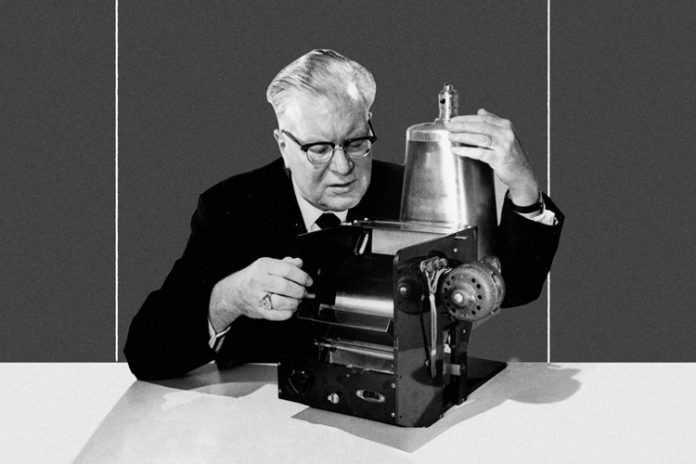Lessons from the Xerox-914: the first real copy machine
Curated from: scottberkun.com
Ideas, facts & insights covering these topics:
5 ideas
·368 reads
5
Explore the World's Best Ideas
Join today and uncover 100+ curated journeys from 50+ topics. Unlock access to our mobile app with extensive features.
The Xerox 914 is a story we can learn from
The Xerox 914 copy machine of 1959 is a great breakthrough in office technology and product design. Its hallmark was simplicity: You simply paced your paper on glass and pressed a button.
How Chester Carlson invented it is a story of risk and persistence. As with most innovation, it took decades from having an idea to making it a real product in the marketplace.
9
164 reads
Chester Carlson focuses on a copying invention
- Carlson worked at Bell Labs in the 1930s in the patent department. He had multiple ideas for different inventions. However, he focused on copying because typing on two sheets of paper with a carbon paper in between was messy and frustrating.
- Carlson was fired in 1933 during the Great Depression. By 1936 he had a new job and also went to night school to study law. To relax, he read books on science and learned about Pál Selényi’s work on electrostatic images.
7
62 reads
Chester Carlson used Pál Selényi's ideas
Carlson did chemical experiments in his own home, to the frustration of his family and neighbours. He mad smelly compounds, melting sulfur over zinc plates in the kitchen smelling like rotten eggs, and once even starting a fire.
Carlson used Selényi’s ideas (more or less to use light to remove static charge, not create it) and his own. After many experiments, he had a breakthrough and created the first copy in 1938.
7
49 reads
Chester Carlson get financial support
- Once patented, Carlson was turned down by 20 companies between 1939 and 1944, including IBM and the U.S. Navy.
- Carlson continued to work in patents at the P.R. Mallory Company and demonstrated his work to an engineer from Battelle, who was there to testify for a patent case. Batelle was impressed and offered financial support.
- In 1946 they signed a deal with Haloid (later renamed Xerox). In 1948 they released the Xerox Model A Copier that took 39 steps to make a single copy.
7
46 reads
Further development of the copy machine
Another decade of development produced the Xerox 914 - named because it could copy paper up to 9″ x 14″. This model was simple to use and didn't damage originals.
As with most new tech, it had some problems. It tended to overheat and often came with a fire extinguisher. The machines required a small team of people who maintained them. But relative to competitors, it was a breakthrough in many ways.
7
47 reads
IDEAS CURATED BY
Rebecca L.'s ideas are part of this journey:
Learn more about technologyandthefuture with this collection
How to create a positive work environment
Conflict resolution strategies
Effective communication in the workplace
Related collections
Similar ideas
Read & Learn
20x Faster
without
deepstash
with
deepstash
with
deepstash
Personalized microlearning
—
100+ Learning Journeys
—
Access to 200,000+ ideas
—
Access to the mobile app
—
Unlimited idea saving
—
—
Unlimited history
—
—
Unlimited listening to ideas
—
—
Downloading & offline access
—
—
Supercharge your mind with one idea per day
Enter your email and spend 1 minute every day to learn something new.
I agree to receive email updates

